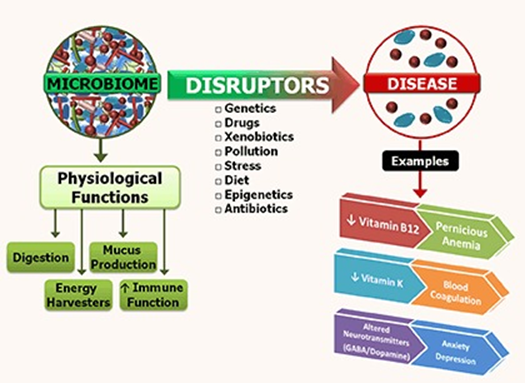
Factors resulting in the disruption of the microbiome lead to dysbiosis. (Note the lack of microbial diversity in the distressed microbiome)
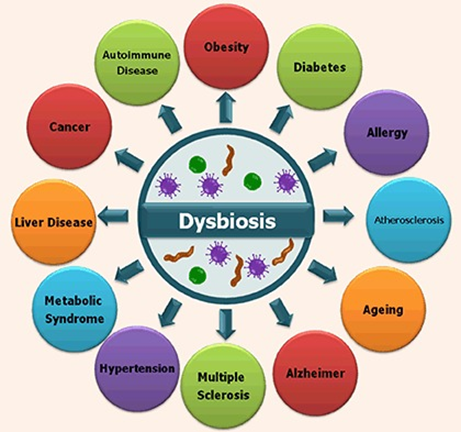
Diseases and dysbiosis. (These medical complications can be initiated by dysbiosis)
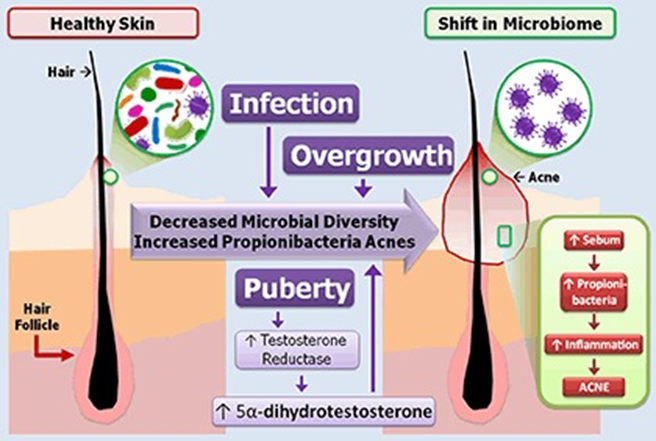
Hormonal and nutrient fluctuations trigger acne. (The dysbiosis caused by these events provokes inflammation)
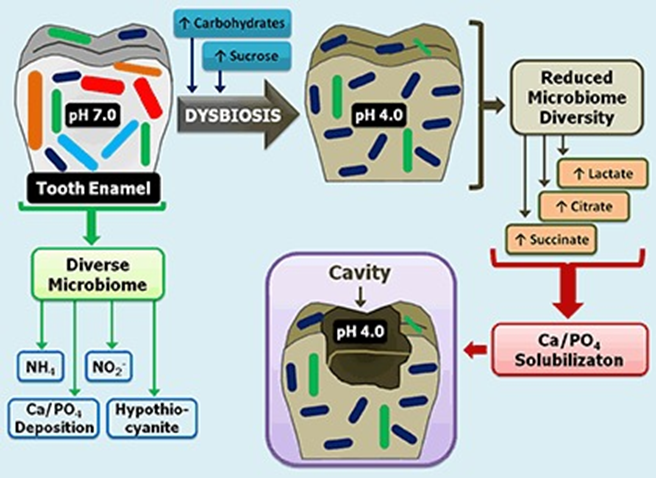
Sugary diet and dental cavities. (The organic acids produced by the imbalanced microbial community decrease the pH and attack the enamel; hypothiocyanite is a potent antimicrobial agent)
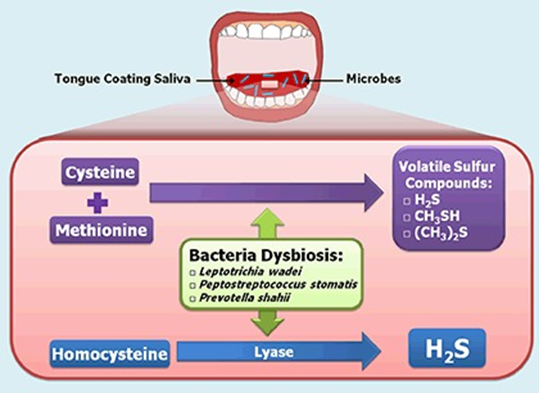
Halitosis: bad breath and oral microbes. (The volatile sulphur compounds are the leading cause of bad breath, dysbiosis also impedes the production of antimicrobials like hypothiocyanite)
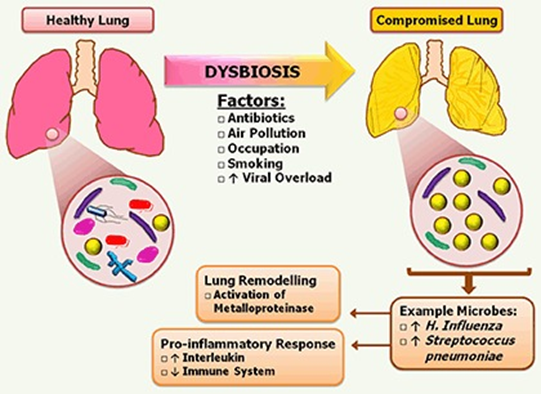
Chronic obstructive pulmonary disease and the lung microbiome. (The remodeling of the lungs leads to decreased functional capacity)
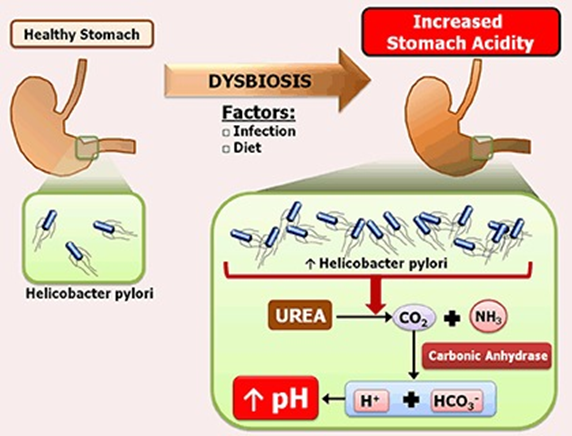
Gastrointestinal microbiome and stomach diseases. (The disruption of the pH is the main culprit)
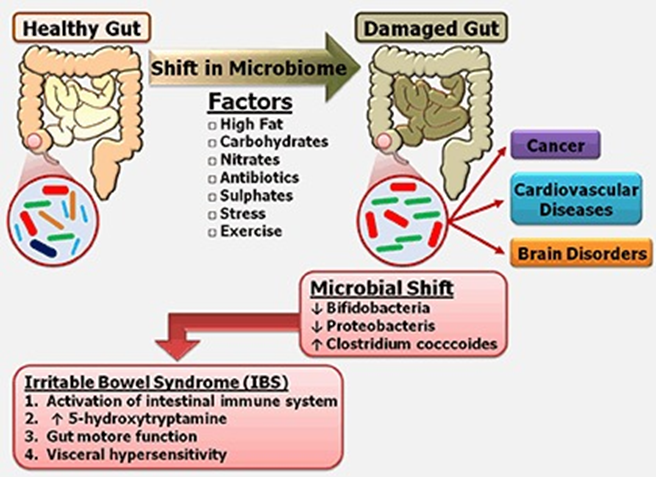
Irritable bowel syndrome. (A reaction to microbial perturbation leading to inflammation and damage in the intestine)
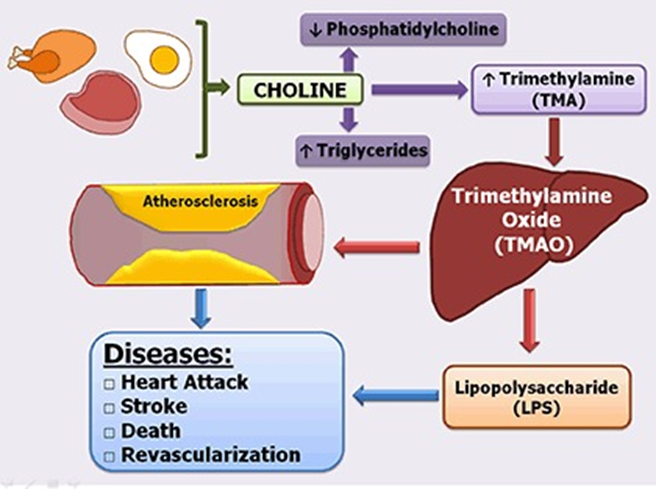
Fatty liver and coronary diseases. (the microbial activity triggers the production of triglycerides and trimethylamine oxide)
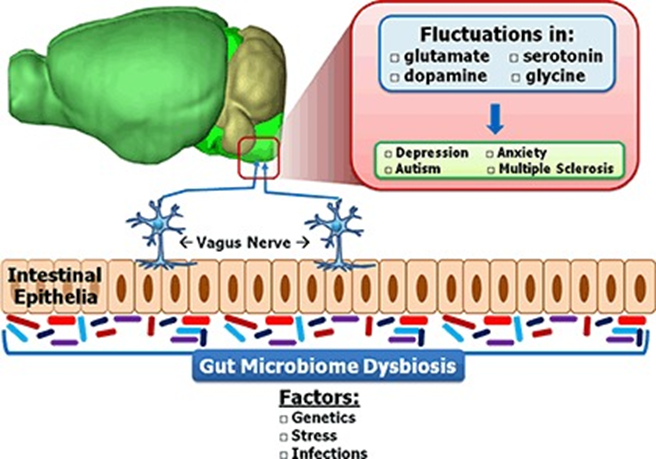
Dysbiosis, abnormal metabolite production and neurological disorders
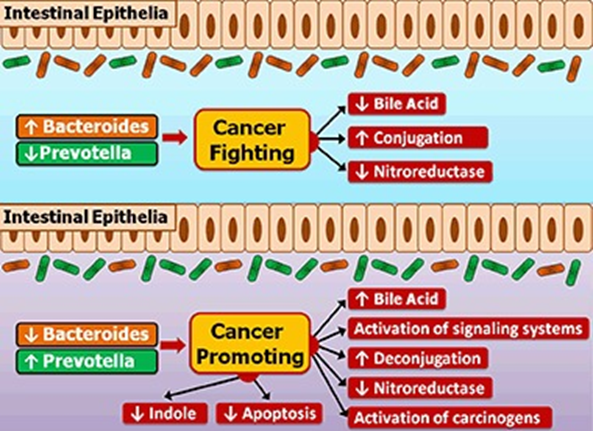
Colorectal cancer triggered by microbial imbalance in the colon. (Decrease in detoxification and increase in cancerogenic metabolites and enzymes)
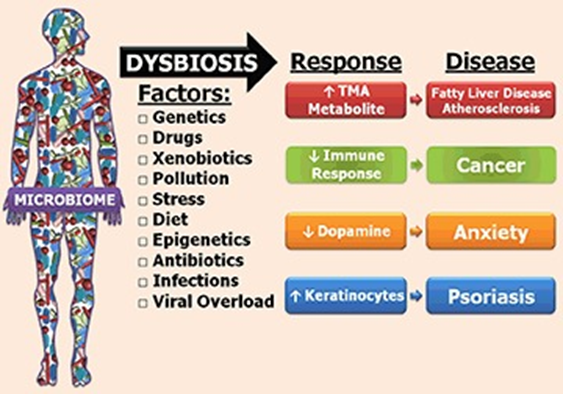
Summary of dysbiosis: causes and diseases
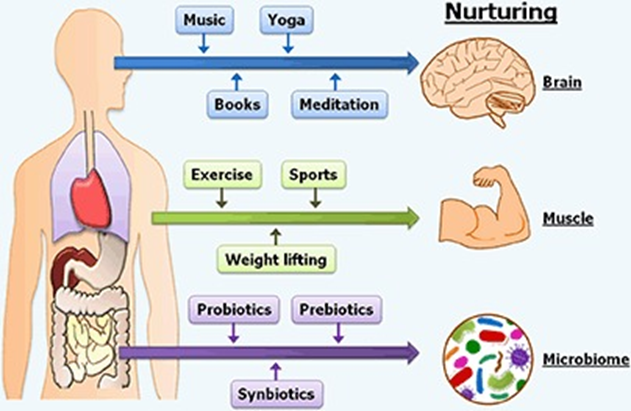
Nurturing of the microbiome, the brain and the muscle. (activities and nutrients involved in fortifying these organs)
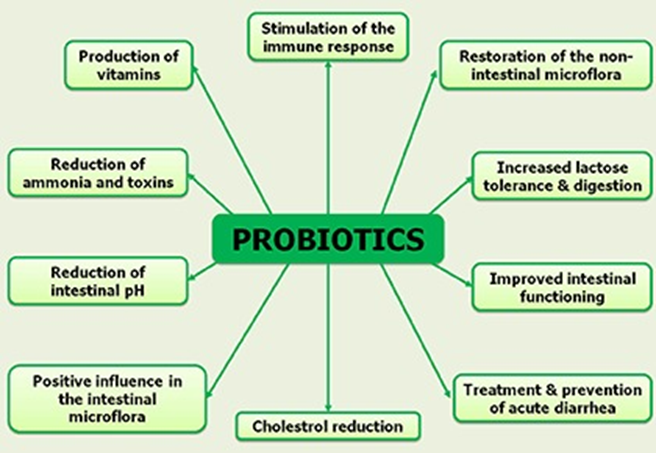
Functions of probiotics in human health
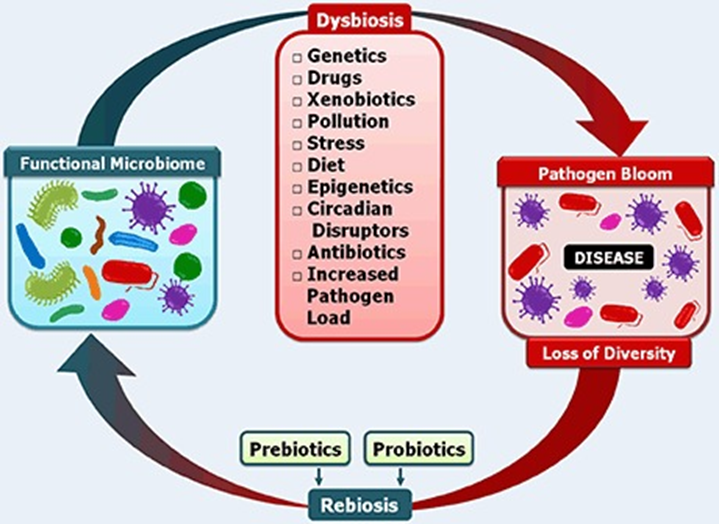
Link between dysbiosis, probiotics and prebiotics
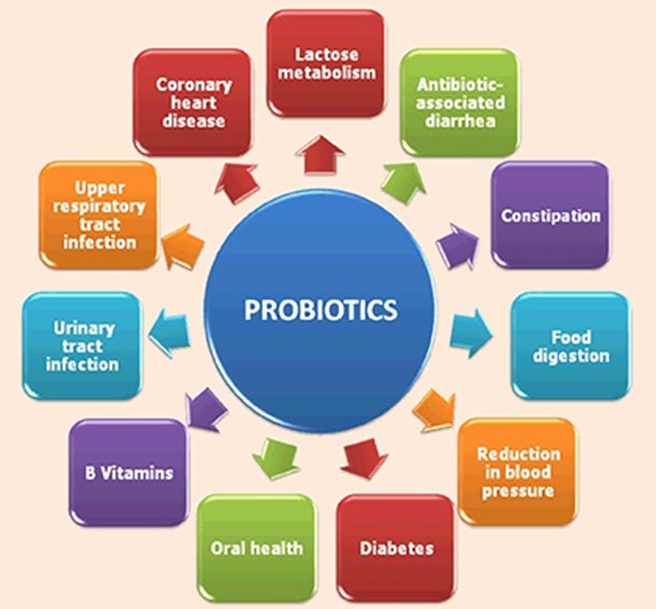
Probiotics: the natural cure for diseases
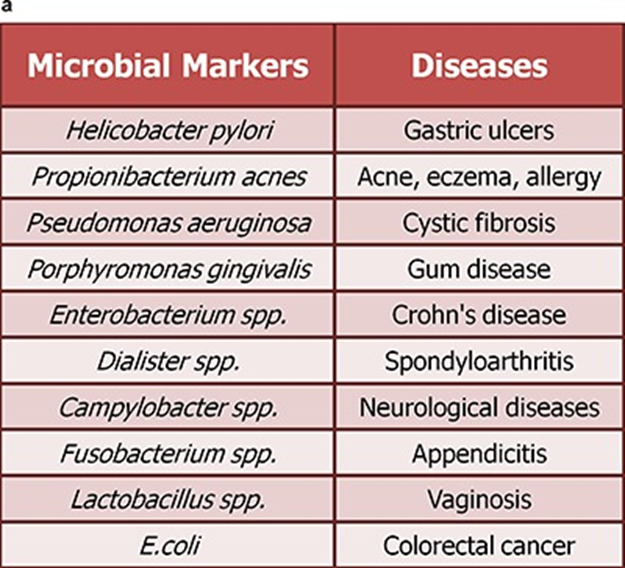
Microbes as biomarkers for diseases
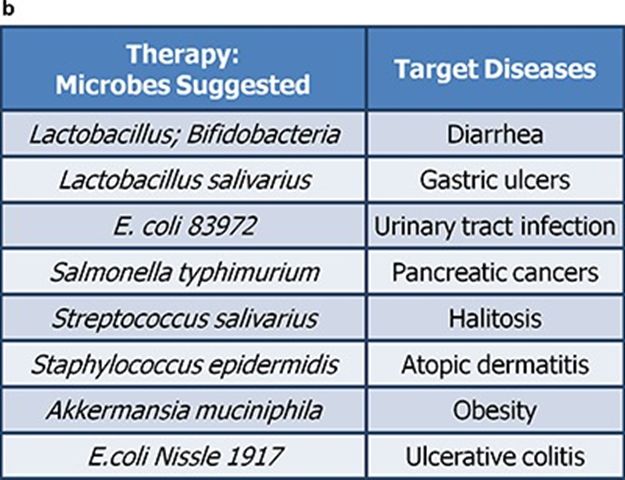
Microbial therapy: Microbes to cure diseases
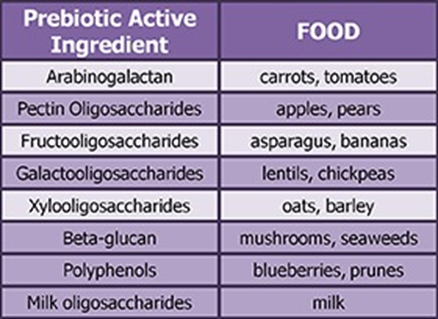
Prebiotics: the microbiome fertilizers
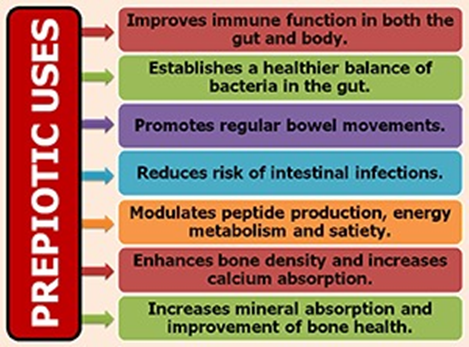
Prebiotics and their health impact
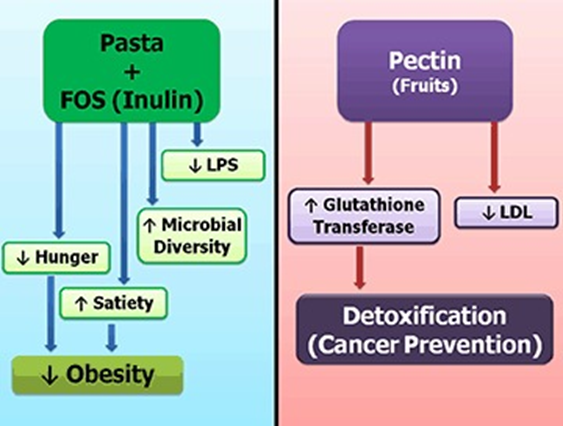
Prebiotics and their molecular interactions
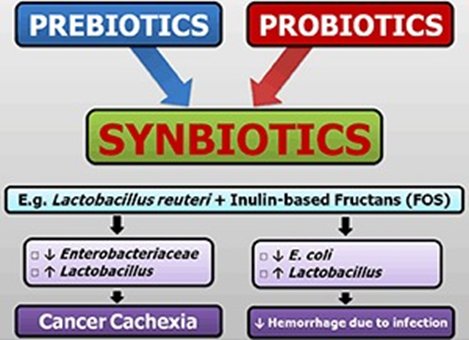
Probiotics and prebiotics to counter dysbiosis and diseases
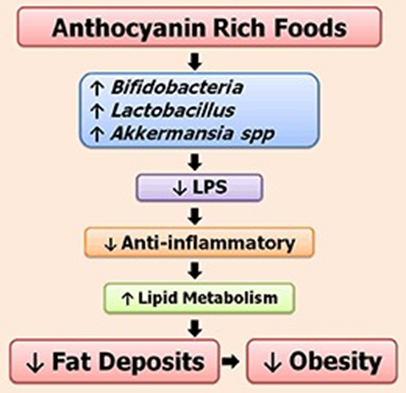
Prebiotics: Anthocyanins against obesity
Appanna, Vasu D.. “Dysbiosis, Probiotics, and Prebiotics: In Diseases and Health.” Human Microbes - The Power Within: Health, Healing and Beyond 81–122. 6 Feb. 2018, doi:10.1007/978-981-10-7684-8_3 This article is made available via the PMC Open Access Subset for unrestricted research re-use and secondary analysis in any form or by any means with acknowledgement of the original source.